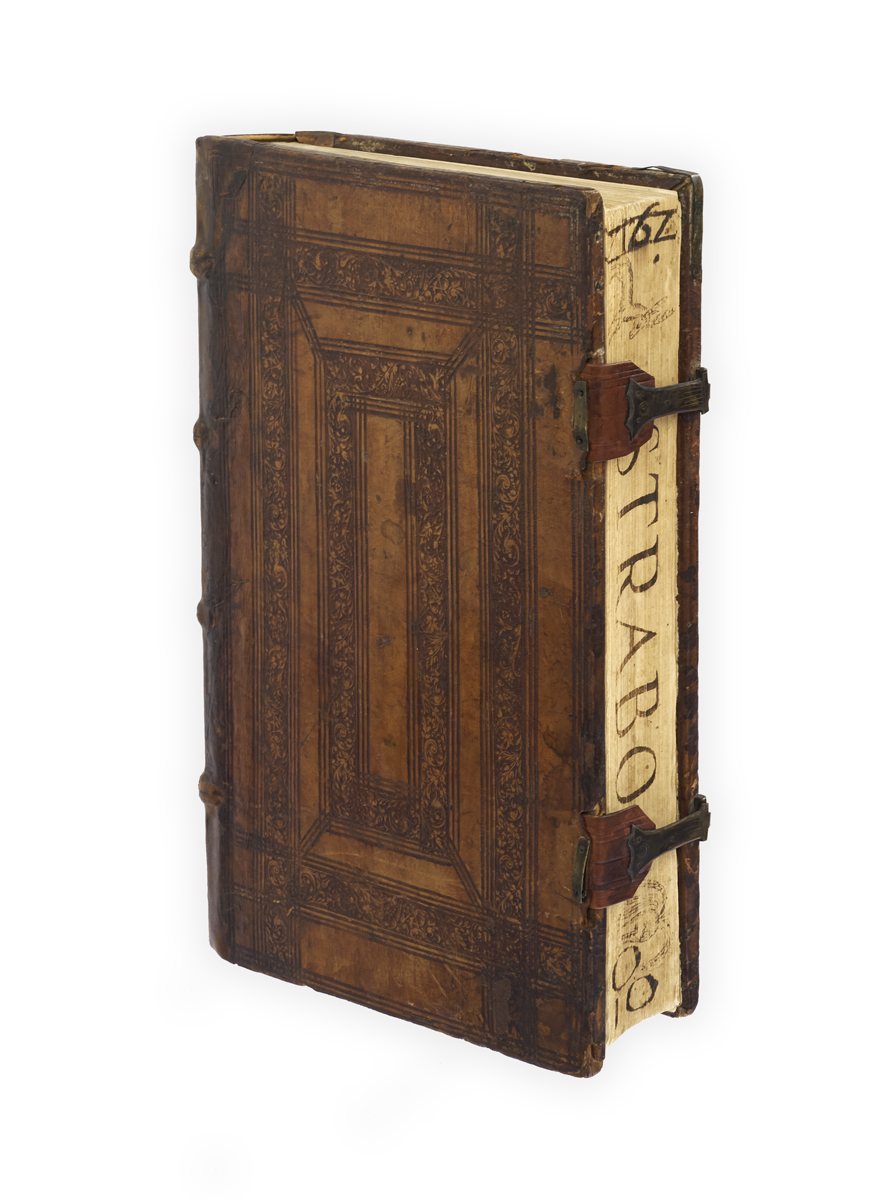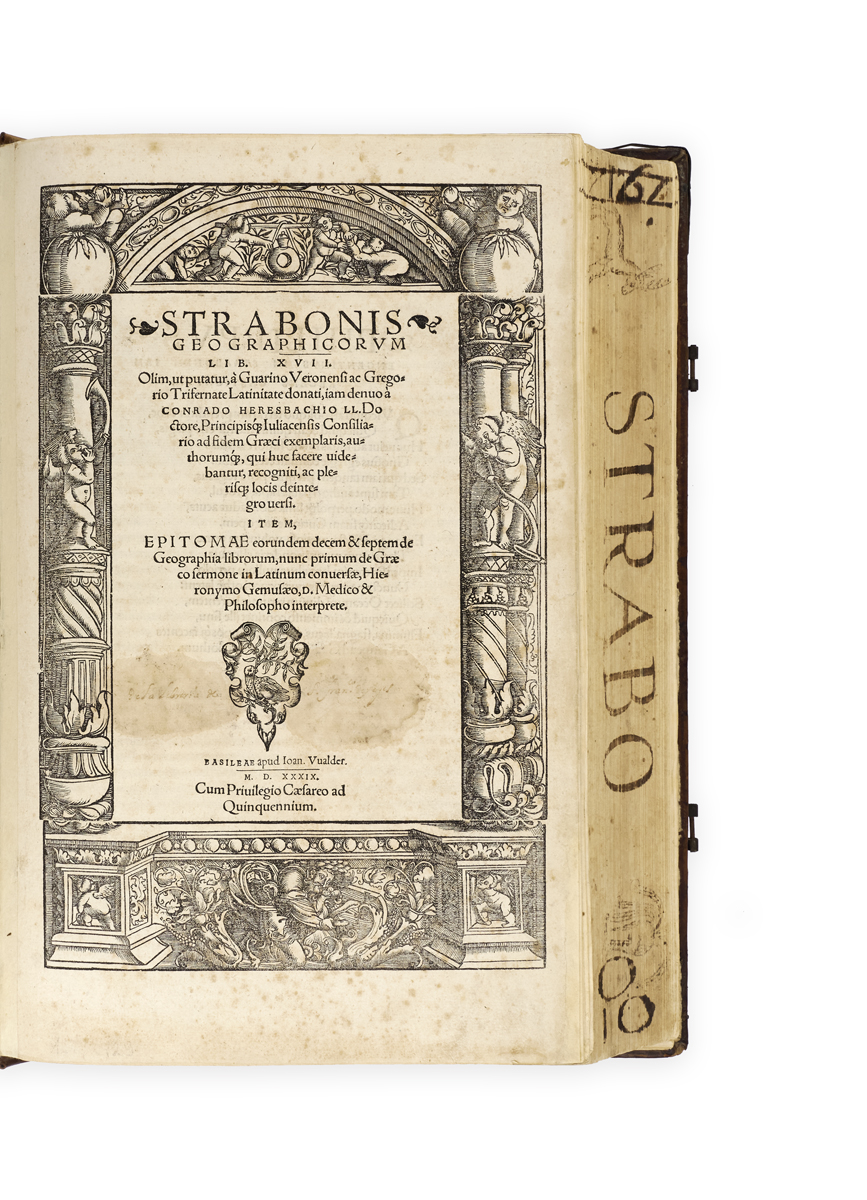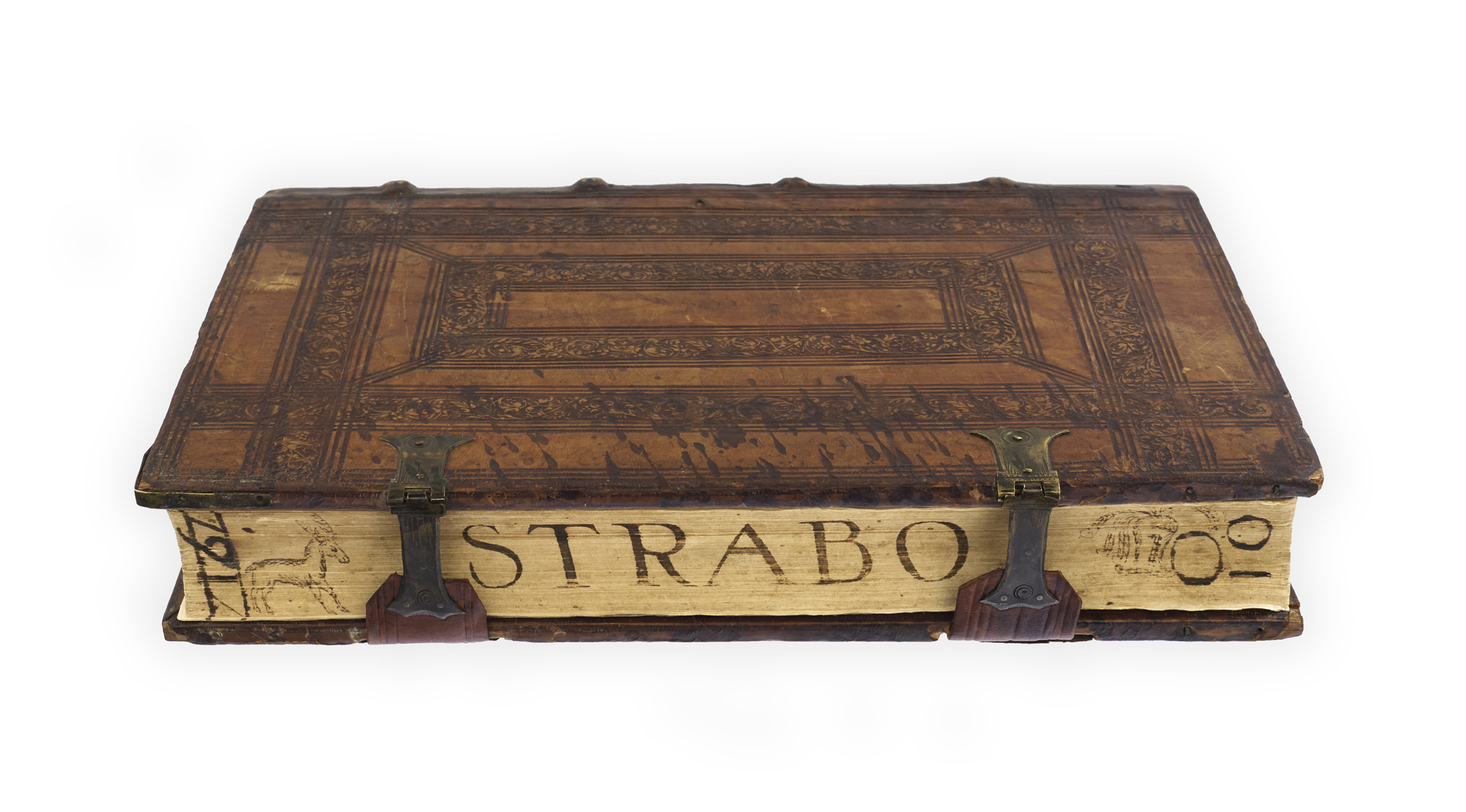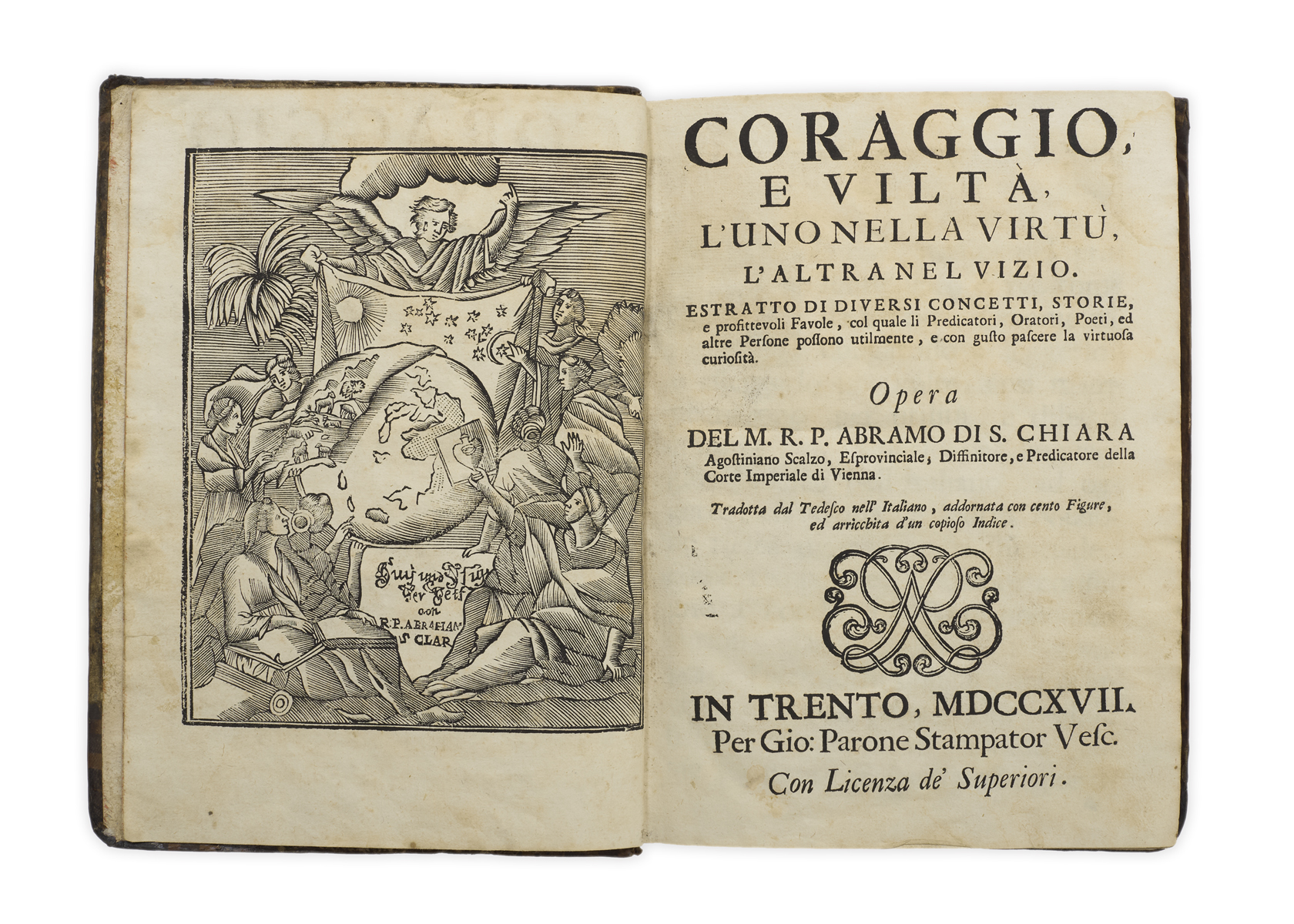


SWISS BINDING, SPANISH FORE-EDGE DECORATION
STRABO.
Strabonis geographicorum lib. XVII ... iam denuo a Conrado Heresbachio … ad fidem Graeci exemplaris, authorumque … recogniti, ac plerisque locis deintegro versi. Item, epitomae eorundem decem et septem de geographia librorum.
Basel, Johann Walder, 1539.
Folio, pp. [lxxxviii], 549, [27]; text printed in Latin and Greek, title within woodcut architectural border, large woodcut initials and ornaments, woodcut printer’s devices to title and final page; neat repairs to outer margins of quire a and to inner margins of quires a–b, marginal paper flaw with old repair to p. 25, some light foxing and toning, occasional marks; overall a very good copy in contemporary Swiss calf over wooden boards, boards roll-tooled in blind to a panel design, two brass catches and clasps to fore-edge (leather renewed), small brass strips to corners (of which three lacking), fore-edge elegantly lettered ‘Strabo’ in ink in an early Spanish hand with shelf marks and 2 ink sketches (one of a stag, the other of a plumed jousting helm); sympathetically rebacked in calf, first and last quires resewn and pastedowns renewed, a little wear to extremities and a few marks to boards; inscription to title (washed) ‘De la libreria de S. Franco. de [?]'.

Added to your basket:
Strabonis geographicorum lib. XVII ... iam denuo a Conrado Heresbachio … ad fidem Graeci exemplaris, authorumque … recogniti, ac plerisque locis deintegro versi. Item, epitomae eorundem decem et septem de geographia librorum.
Second edition of Strabo’s masterful Geographica in the Latin translation of the German Humanist and friend of Erasmus, Konrad Heresbach (1496–1576), here found with the first Latin translation of an epitome of Strabo’s work by the Basel professor of physic and logic, Hieronymus Gemusaeus (1505–1543).
Likely completed in the early first century AD, Strabo’s work was the first attempt at a geographical encyclopaedia embracing the sum of physical, mathematical, political, and historical knowledge. The book is a description of the countries of the Roman Empire, the Middle East, and India, based both on Strabo’s own travels and earlier Greek authorities. It contains many interesting ethnological observations: on the Hanging Gardens of Babylon, for instance, and the whales of the Persian Gulf; how the Indians capture elephants and long-tailed apes, how the Egyptians feed their sacred crocodiles, and how the Arabs get fresh water out of the sea.
Having studied at Cologne, Heresbach worked as a corrector for Johann Froben in Basel before moving to the University of Freiburg to teach Greek. It was here that he undertook his edition of Strabo, first published at Basel by Valentin Curio in 1523, and here published by Johann Walder, who married Curio’s widow. Erasmus did much to advance Heresbach’s career and they remained in correspondence until the former’s death. Heresbach also produced Latin editions of Herodotus and Thucydides.
Adams S 1904; VD16 S 9347.

